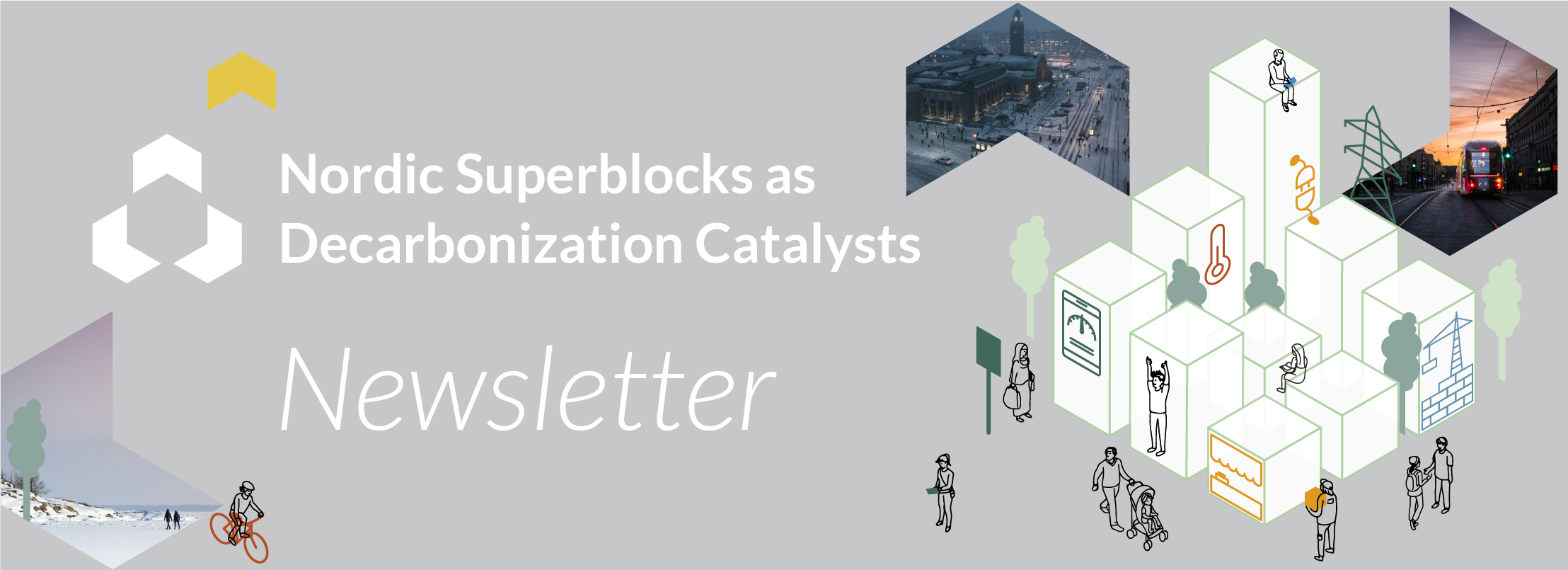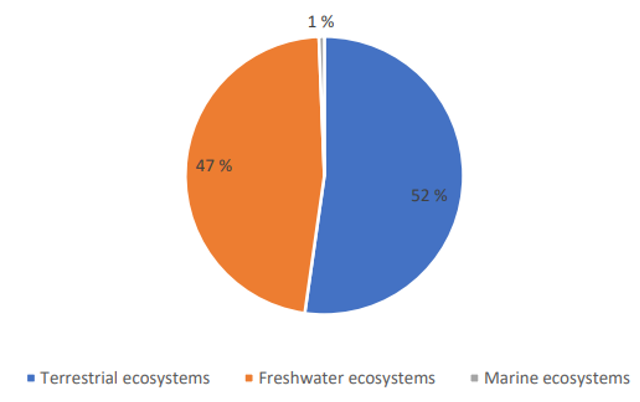8 January 2025
Read about Granlund and Skanska’s biodiversity pilot in the latest NSDC newsletter (Issue 3)
For a printable PDF version click here: NSDC newsletter 3
Up to one-third of biodiversity loss is due to construction – Granlund and Skanska piloted biodiversity impact calculation in the NSDC initiative
Carbon footprint calculations are already commonly conducted in construction projects. Climate change is a significant contributor to biodiversity loss and, hence, it is good that carbon emissions are monitored and mitigated. However, there are also other contributors to biodiversity loss, such as water stress, pollution, land use and transformation, and invasive species. More comprehensive considerations of overall biodiversity impacts are thus needed since construction has a significant impact on biodiversity with the construction sector being responsible for up to 30 % of global biodiversity loss.
Calculations of embodied biodiversity impacts of a building have been researched and piloted in NSDC by Granlund and Skanska. Biodiversity impacts were calculated for an apartment building, constructed by Skanska using the LC-impact method. Embodied biodiversity impacts were calculated for the building, reportedly for the first time in Finland.
The research conducted gathered a great amount of valuable information on methods for biodiversity impact calculation, biodiversity impacts of a building, and different building materials.
Tampere University and Synocus research collaboration and design of communal living areas
Synocus is supporting Tampere University in developing a collaboration platform deepening the understanding of how communal living is nurtured. The work in NSDC emphasizes the centrality of collaborative processes in the shaping of sustainable, communal urban areas. This collaboration must encompass the entirety of the process, from the early planning phase through the construction and operational phase to the possible renewal of the built environment.
A key research perspective of NSDC is a better understanding of the need for knowledge transfer across the different phases of buildings’ lifecycles to ensure the best user experiences for those occupying a building over its lifetime. Together, Synocus and Tampere University will investigate how different customer categories prioritize building properties, offered services, and the ability to engage with others in the local community. There are already good examples of communities that have aimed at engaging and activating residents as part of the concept. Synocus and Tampere University will explore the means of making this even more effective.
The research engages stakeholders around the different sites being studied together with consortium partners in a variety of interactive means, beginning with a consortium-wide workshop on January 29th at Oodi in Helsinki. The researchers from Tampere University will use the findings from these cases in their scientific publications.
The results of this collaboration will also shape a design manual that can translate research results into actionable guidelines for future living communities combining affordability, livability, and sustainability. This is one of the key objectives of the whole NSDC initiative.
NSDC Partner News
Skanska and the City of Tampere develop new sustainable, communal district in Härmälänranta
Skanska has been involved in the planning and development of Tampere’s Härmälänranta district since its earliest stages in 2006, helping Tampere set and guide a vision for a district that responsibly embraces sustainability through smart mobility, energy efficiency, and ample green areas. The district also leads a growing trend among cities towards communal living, designing shared spaces and localizing services to bring the area’s residents together and ensure they have what they need in their immediate surroundings. You can read more about the development here
NSDC Partner News
KONE celebrates four-year Veturi ‘The Flow of Urban Life’ with NSDC partners
KONE’s ‘The Flow of Urban Life’ research and development journey tackled some of the biggest challenges posed by urbanization and climate change. From smart construction to operation of smart buildings with green field services, KONE and its partners aim to create a better urban future for the next billion people moving into cities by 2030. You can see the event recordings here
NSDC Partner News
Tampere University supports developing Resilient Smart City Solutions in RECO 2.0 project
The University of Tampere has participated in the RECO 2.0 Resilient Smart City Solutions Ecosystem project. The RECO 2.0 project has been led by the City of Tampere, with close cooperation between companies, research institutes and city departments. One of the university’s sub-projects explored smart energy solutions as part of a carbon-neutral city block concept. Read more about the project’s smart energy solutions in practice and watch a recording of the seminar

